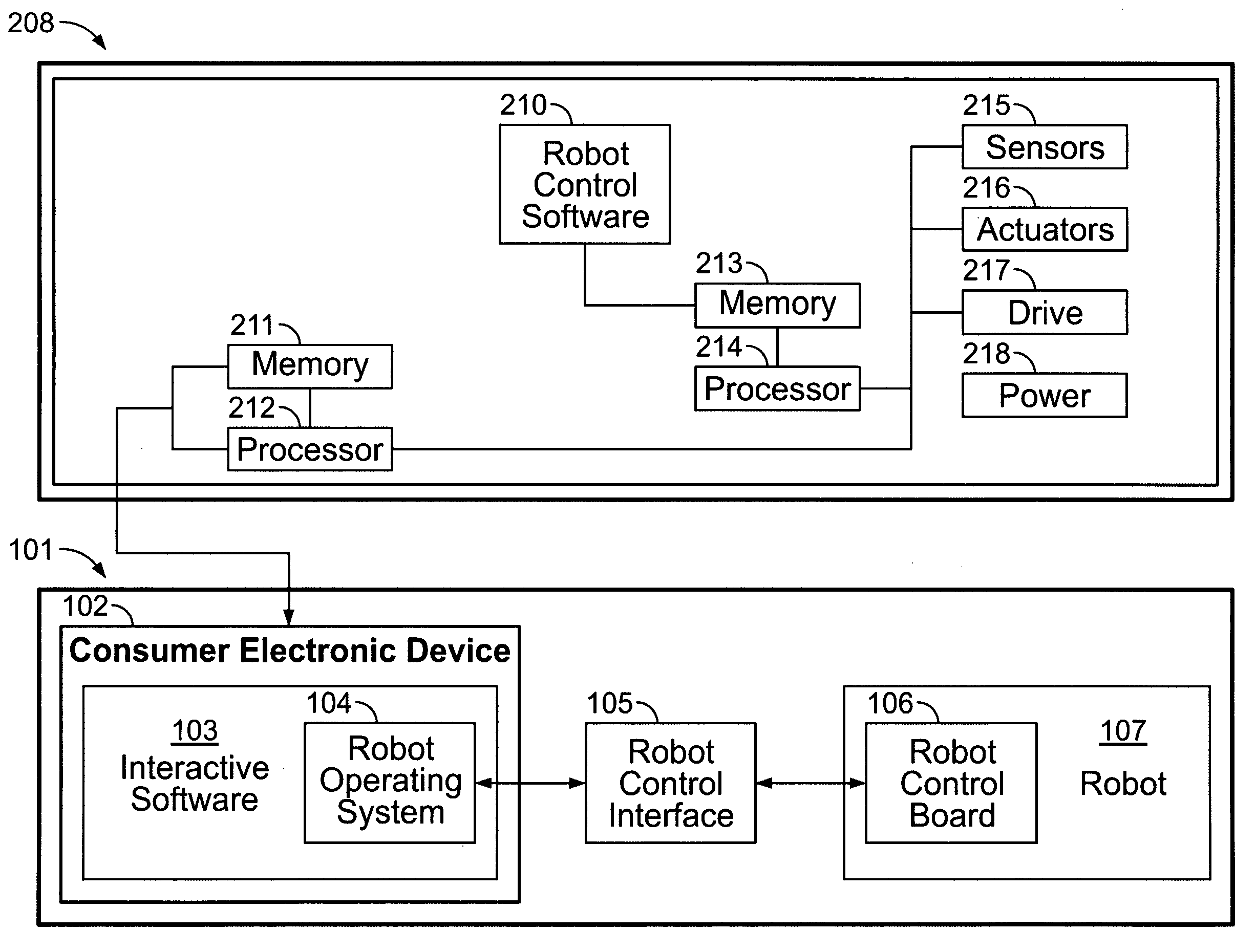System and method for reconfiguring an autonomous robot
a robot and system technology, applied in the field of system and method for reconfiguring an autonomous robot, can solve the problems of robots expensive to manufacture, economic disequilibrium in the industry, and the overall configuration of the robot cannot be changed, so as to reduce the complexity
- Summary
- Abstract
- Description
- Claims
- Application Information
AI Technical Summary
Benefits of technology
Problems solved by technology
Method used
Image
Examples
Embodiment Construction
[0038] In the following detailed description, numerous specific details are set forth regarding the system and method of the present invention and the environment in which the system and method may operate, etc., in order to provide a thorough understanding of the present invention. It will be apparent, however, to one skilled in the art that the present invention may be practiced without such specific details. In other instances, well-known components, structures and techniques have not been shown in detail to avoid unnecessarily obscuring the subject matter of the present invention. Moreover, various examples are provided to explain the operation of the present invention. It should be understood that these examples are exemplary. It is contemplated that there are other methods and systems that are within the scope of the present invention.
[0039] In accordance with the present invention, systems and methods are provided to make the widespread adoption of robots possible by reducin...
PUM
 Login to View More
Login to View More Abstract
Description
Claims
Application Information
 Login to View More
Login to View More - R&D
- Intellectual Property
- Life Sciences
- Materials
- Tech Scout
- Unparalleled Data Quality
- Higher Quality Content
- 60% Fewer Hallucinations
Browse by: Latest US Patents, China's latest patents, Technical Efficacy Thesaurus, Application Domain, Technology Topic, Popular Technical Reports.
© 2025 PatSnap. All rights reserved.Legal|Privacy policy|Modern Slavery Act Transparency Statement|Sitemap|About US| Contact US: help@patsnap.com



